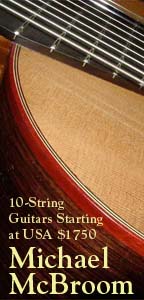































































|
May 28 2005, 11:36 PM
Hey Steve,
Haven't started with the Brazillian yet. I'm taking things rather
slow here. Trying to figure out all possible things that could
go wrong with build #8 before trying most any of it on build
#9.
I have found the Bolivian to be somewhat prone to splintering.
Especially the sap wood. One has to exact a bit of extra care
when working with Bolivian rosewood, or else it will chip and
splinter on you. However, I have found that it carves well with
sharp chisels.
Of course, the other caveat about Bolivian rosewood is that many
folks are extremely allergic to it. Same goes for cocobola
as far as that goes -- with some folks.
Regarding the bracing pattern, I still consider it to be experimental.
I like the concept of having an "open" upper bout for
classicals, but folks need to realize that the result will be
guitars that will inevitably sound somewhat differently from
"standard" classicals. So ultimately, the question
at hand will be whether an open design for the upper bout has
acoustic merit. The answer will be determined in large part by
preferences that are as old and varied as the nuances of classical
guitars themselves.
Best, Michael
May 29 2005, 01:55 AM
ramirez must not be traditional, or my eyes are bad, for the
10 string you used to start the thread, and every other one i'm
familiar with has the cl of the twelth fret tangential to the
curve of the body where the neck joins.
May 29 2005, 08:09 PM
Michael,
Remember, it is said there are two kinds of people, those who
are now alergic to these tropical woods and those who will be.
Use them while your are able.
Steve
May 31 2005, 10:48 AM
You know, Steve, I was thinking about that just yesterday. I
have a light rash on my left arm that suddenly appeared yesterday
-- pretty much gone now, though -- and the most likely culprit
is this guitar's Bolivian rw.
Time to dig out the good dust masks and long sleeve shirts. I'm
gluing down the binding and purfling today, so next step is scraping
and sanding. The binding is Bolivian also.
Best, Michael
Jun 2 2005, 11:18 AM
Welp, this got me to wondering because I knew I'd seen 10-strings
with the 12th fret at the body joint. So I searched around, including
at Stephen Bright's Yahoo site dedicated to 10-string guitars.
Dunno if you have to be a member to access the Photos section
there. Anyway, if you look there, you'll see what appears to
be both methods of joining the neck to the sides.
I sent an email to Stephen, who's commissioned me to build #9
for him, asking him about the 12th fret positions on his two
10-strings, one is a Ramirez, and the other is a Lucio Nunez.
The Ramirez's 12th fret is placed where it would be placed on
a 6 string, about 0.10" nutward of the neck to side joint.
However the Nunez's sides join the neck at the 12th fret.
The way I see it, the biggest difference from a player's perspective
between the two fret placing methods is that the soundhole will
take a bigger bite out of the 19th and higher frets with 10-strings
that have the 12th fret at the body joint -- unless the soundhole
has been similarly moved. But considering that the fingerboard
is wider and that the treble strings are displaced southward,
my measurements indicate that I should be able to wrap the fingerboard
on guitar 8 out to the 22nd fret. High E string only though,
by the looks of things.
This construction method positions the bridge rearward by the
same amount. I can see how this might affect the overall sound
somewhat, but I'm wagering that any effect will be minor.
Best, Michael
Jun 2 2005, 12:54 PM
Next step was to route #8 for binding and purfling and to install
it. With this guitar, I decided to go with non-contrasting binding,
so I trimmed a couple of strips from the sides and cut each into
binding pieces. I got six pieces out of this set of sides. Five
got used.
Purfling for the top was from some curly maple veneer I cut using
a pasta machine. I dyed the colored purfling using fabric dye.
Purfling for the sides and back is also curly maple, cut from
a board that I use just for purfling. I thickness the latter
with my drum sander down to 1mm (0.040") usually, sometimes
0.022". The trick to getting purfling this thin is to place
it on a very flat board and run it through using the board as
a support piece.
I started by doing a dry fit of the binding and purfling, making
sure everything is lining up right.
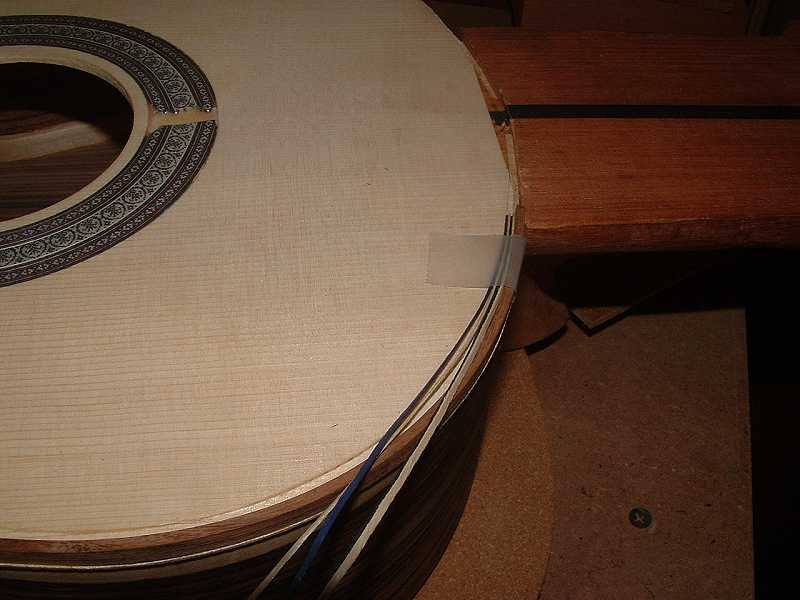
Then, partially following Rik Middleton's methods, I installed
the binding . . .
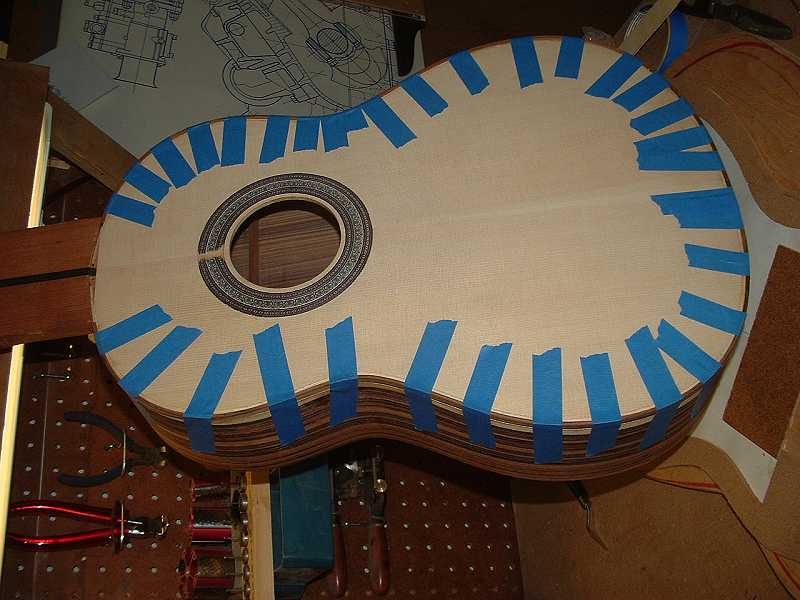
And then the purfling. Did this with both the top and the back.
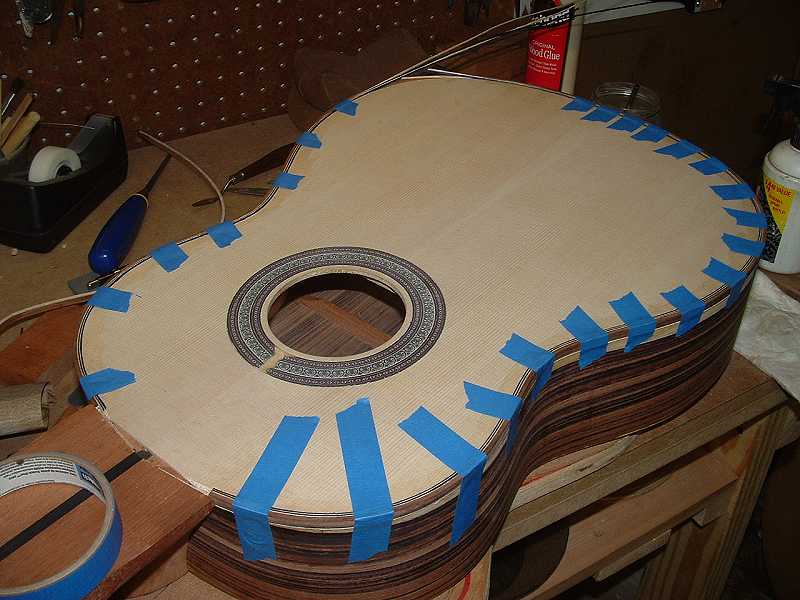
Middleton glues his purfling and binding down with cyanoacrylate.
I don't care to do this. I use Titebond. To glue in the purfling,
I water the Titebond down til it's kinda soupy, install the purfling
and blot it liberally with the water-glue mixture as I go along.
Saw Grant use a technique similar to this with the rosette, I
believe it was, on his adjustable neck build, and I've kinda
been partial to it ever since.
Scraped and scraped and scraped . . .
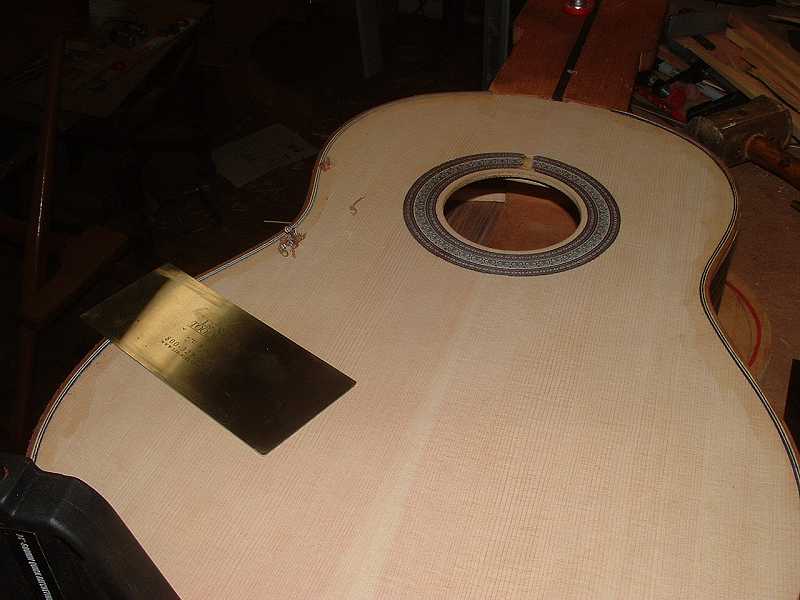
And then sanded some and it was starting to look right.
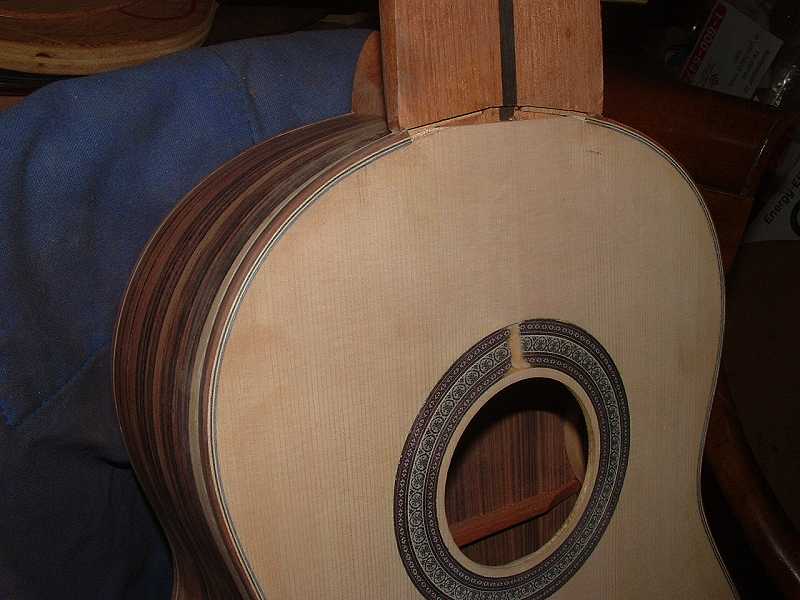
At the bottom end, things fitted together as nicely as I could
have expected. Got some chip out on the butt splice though. Have
I mentioned yet that Bolivian rosewood is prone to chipping?
Especially the sapwood. There are several small areas on this
guitar that will need some attention before I begin to put a
finish on it.
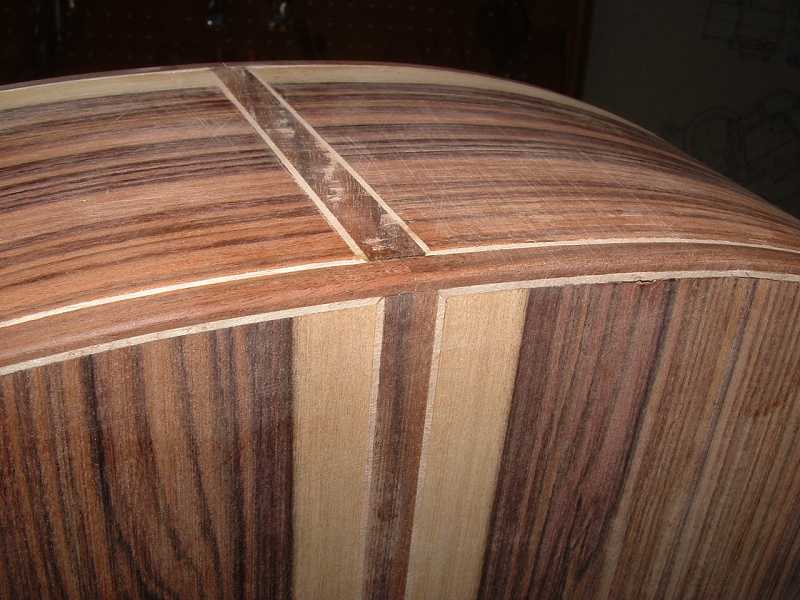
Next I'll slot and install the fingerboard. Still got quite a
bit of sanding and contouring of the neck heel to do yet, too.
Best, Michael
Jun 2 2005, 02:17 PM
Michael,
I am enjoying your build pictures. You are making progress. Nice
job.
I went to Middleton's site and really enjoyed it. Do you think
I should buy his book? I guess I mean do you think there are
enough overlaps between his classic builds and my steel string
flat tops?
I think you will like using the KTM9. Boy, does it polish up
nicely. It also seems to cure harder that nitro or shellac. The
finger rest on my archtops show very little wear from my nails
or rough fingers.
Just think about that Bolivian RW made me itch though.
Steve
Jun 4 2005, 11:50 AM
Last month I bought a StewMac fretting jig. I wanted to use it
with the 10-strings although I knew it would be too narrow. Fortunately,
it comes apart, and I was able to insert a piece of aluminum
to widen the base. Forgot to take pictures until I was bolting
up the modified assembly.
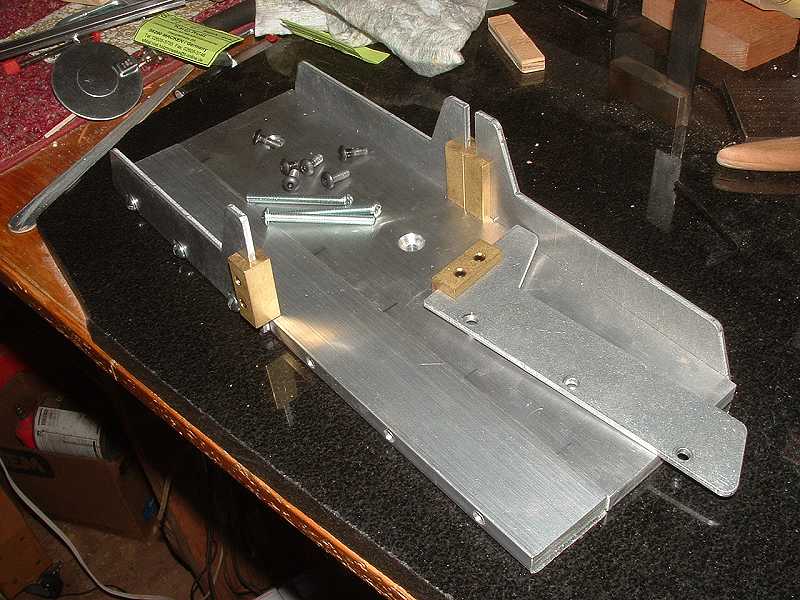
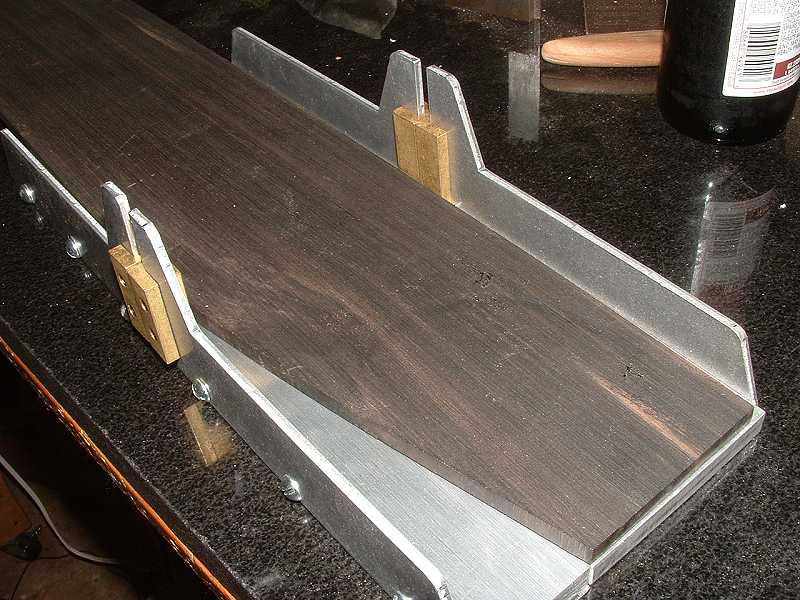
Finally ordered the template for this rig. I should be cutting
number 8's frets next week.
In the meantime, I've been working on guitar 9. I've joined the
top set and back. Because the back set was already cut to approximate
shape, I had to improvise when it came to clamping it down. This
method worked pretty well.
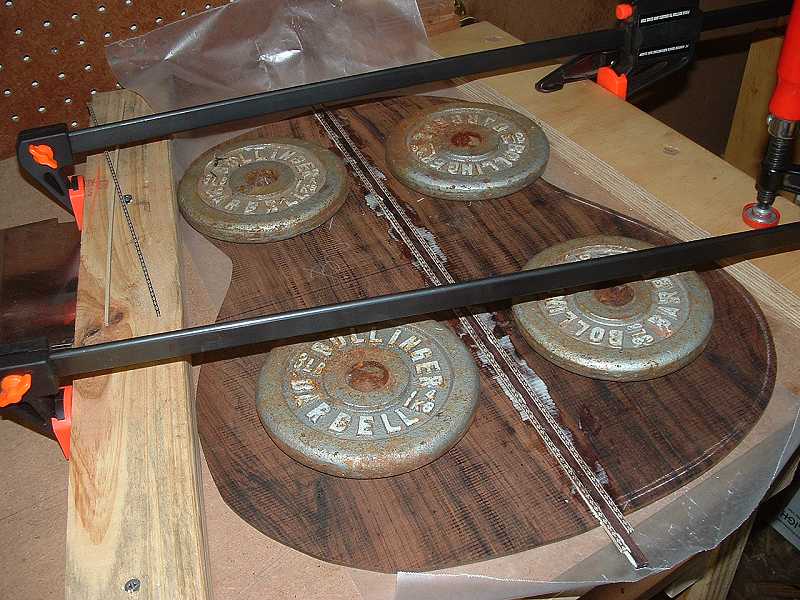
The purfling scheme that Stephen selected is very wide. Because
of the width of the purfling, I used my binding/rabbetting bit
set to rabbet a ledge for the purfling to sit on, preserving
in the process a rosewood-to-rosewood joint. I didn't do this
with guitar 8, since the purfling was a single 1mm wide strip
of curly maple.
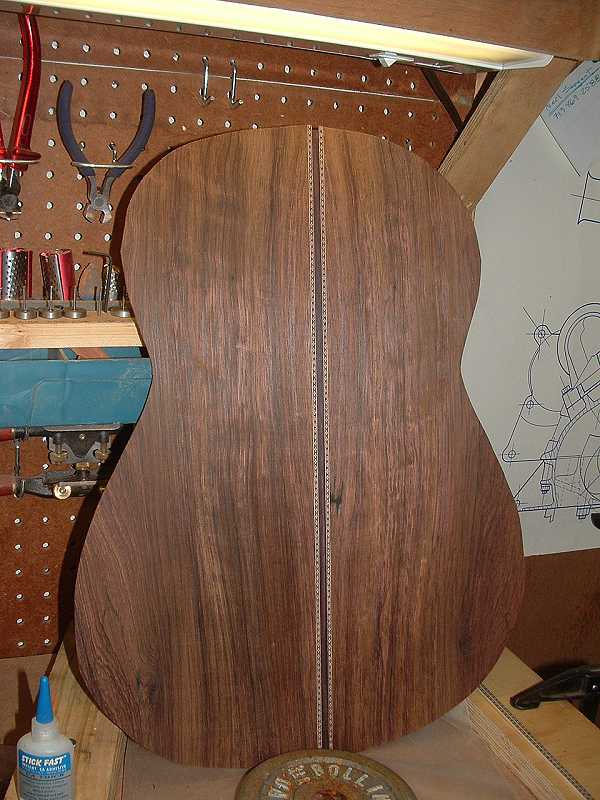
Bent guitar 9's sides yesterday, too. First time I've bent Brazilian.
It was cooperative, no unpleasant surprises.
Best, Michael
Jun 8 2005, 11:55 PM
The template for my Stewmac fretting jig finally arrived yesterday.
I put it into service today.
Using this system on a 10-string fingerboard is more involved
than with a 6-string, mostly because the jig's box is too wide
now for the template with the additional aluminum insert I installed.
The template would nortmally fit snuggly between the two sides
of the box, preventing the fingerboard from moving around. But
because of the extra width, I had to clamp it down for each cut.
I found that, once I got the jig tweaked and adjusted, that it
worked pretty well.

I made a new gluing caul for this step. My regular one isn't
wide enough.
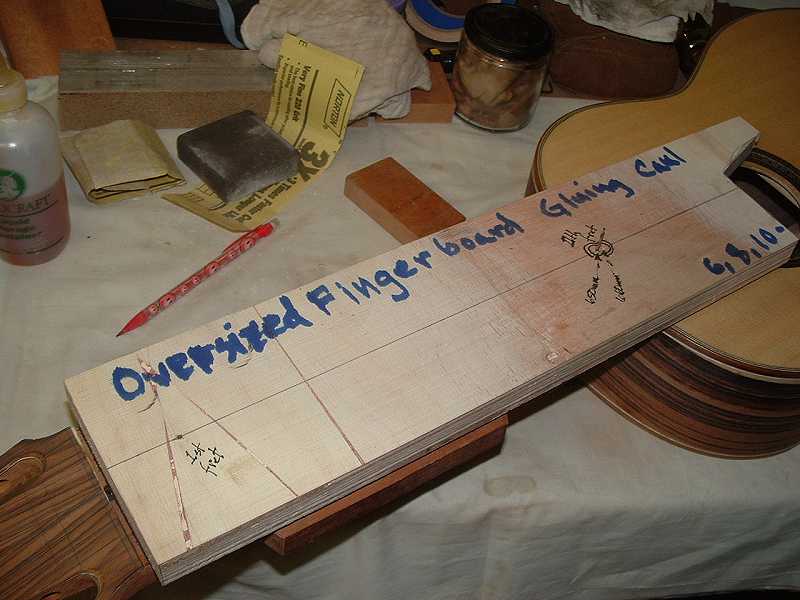
Never can have too many clamps . . .
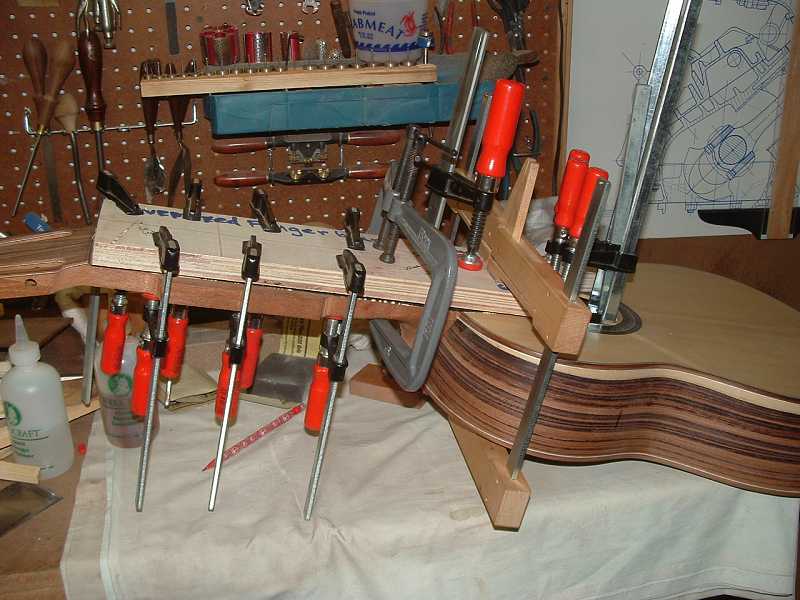
But before I did all this, I spent some time on the top. Sanded
it to 220, then put down a couple of light sealer coats of shellac.
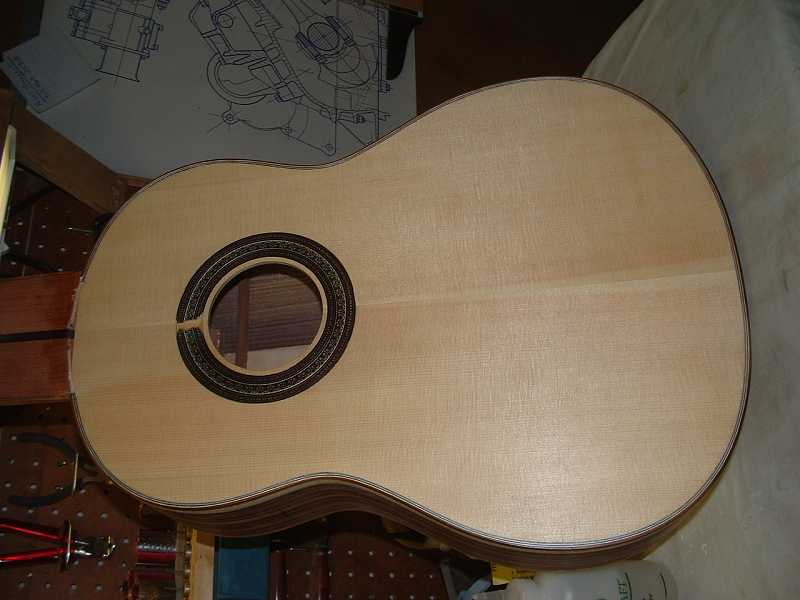
This is a Kermodie spruce top. It has some very nice silk that
has a bit of figure to it. This photo doesn't really do it justice.
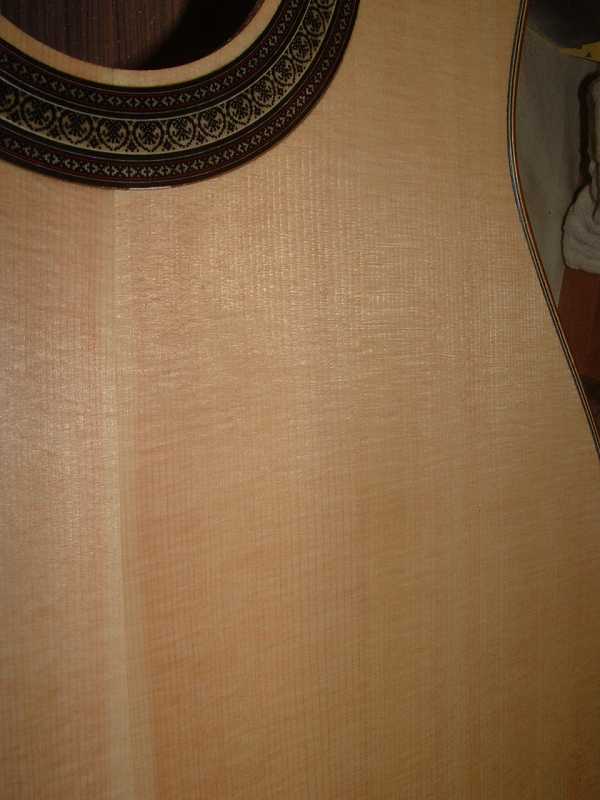
Tomorrow I begin to finish up on the neck.
Best, Michael
Jun 9 2005, 01:08 PM
Michael,
You are getting really good with your binding. This one looks
super. That spruce does look nice. It will sound good too.
Steve
Jun 9 2005, 01:57 PM
I agree with Steve-Great job matching the B&S's too-Ive noticed
that even the best of the best sometimes don't seem to take the
match into consideration whilst joining-
-question-Tuners?10 strings?
Jun 9 2005, 09:22 PM
Thanks guys.
WB, I'll be using different tuners for each guitar. Stephen has
supplied a set of Alessi's (he's also a US distributer of them),
and I plan to cut a pair of Hauser-style Schallers.
Here's Stephen's five-on-a-side tuners:
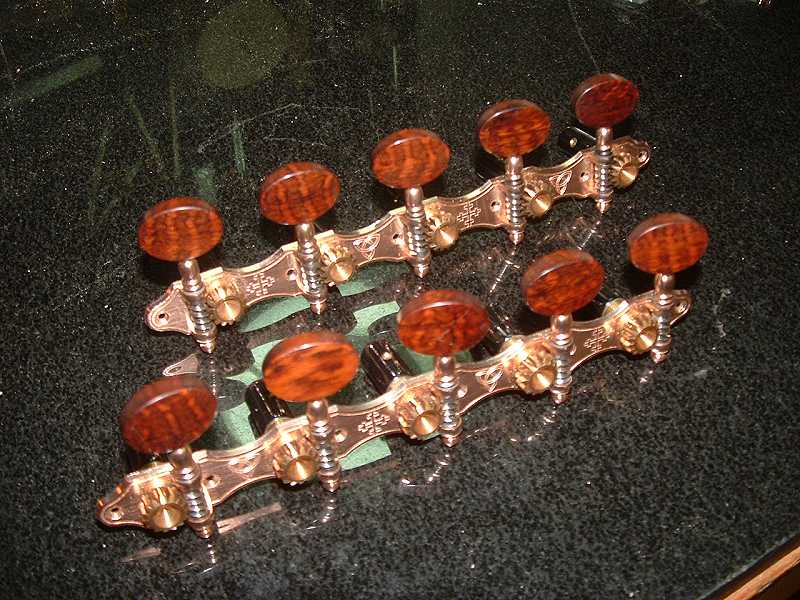
And here are the two sets of Schallers. I've dismantled both
right side sets already.
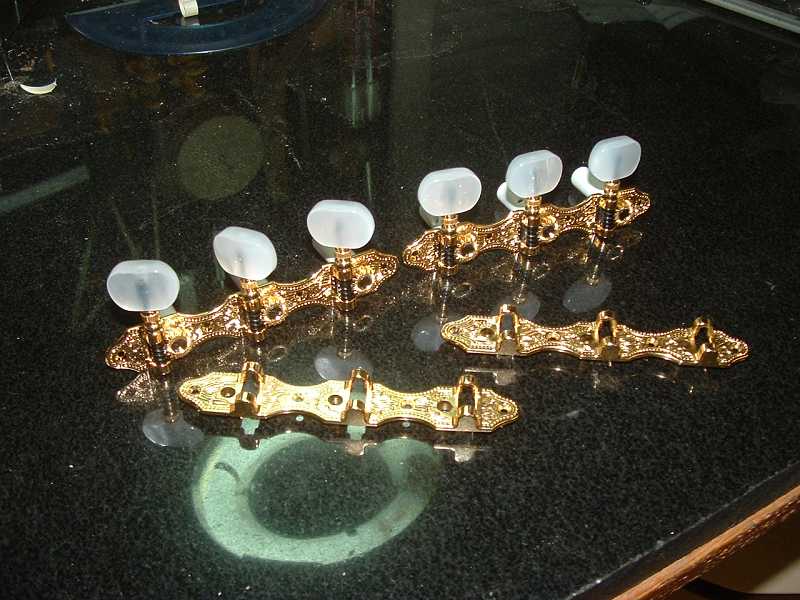
I'll document how I cut the Schallers in a future post.
So, why cut when I can order a set of five-on-a-side tuners?
Well, Jose Ramirez, the originator of the modern 10-string, cut
tuners for years. Fusteros -- not cheapies. So, cutting tuners
works just fine. Nowadays you can find a few makers of tuners
who make them for 10-strings. None of them are in the same economy
class as the Schallers, though. And for me right now, the Schallers
fit my budget.
Best, Michael
NEXT PAGE / PAGE 1 / PAGE
2 / PAGE 3 / PAGE 4 / PAGE
5 / PAGE 6 / PAGE
7 / PAGE 8
Home / Articles
/ Gallery / Accessories
/ Builders / Composers
/ Guitarists / Movies
/ Sheet Music / Free
PDFs / Recordings / Teachers
/ Radio / Join
/ Contact Us
|
